Within the first 6 seconds:
“We knew the world would not be the same. A few people laughed, a few people cried. Most people were silent”— J. Robert Oppenheimer.
2023 has been a wake-up call for many, showing how things can quickly turn for the worse. Where we once felt safe at home, in our city or hometown, more and more people are beginning to realize that disasters and tragedies don’t always happen over there and to those people. Every day, we are awakening to the fact that we are, at any given time, living in the shadow of a coming disaster. One disaster or perceived calamity can cause panic. More than one compounding each other will lead to a prolonged griddown situation. While a region might recover after a few days or weeks if outside help is available, a regional or national incident could leave you alone without help. The reality is that we live in a time of nuclear states issuing threats, multiple wars drawing in nations, and technology capable of crippling the grid, disabling infrastructure, or delivering an electromagnetic pulse that could plunge us into darkness for months. If a significant enough event were to occur that completely disrupted our supply chains, resources, and agencies designed to help after a disaster, the results would be catastrophic. Most alarming, the a verage family lacks more than a week’s food and water. In this video, we’ll discuss the reality of surviving any disaster exceeding 100 days, how it will all fall apart, and what you must do to survive.
CityPrepping Community
Visit CityPrepping.com to join our new Community portal which launches on November 6th of 2023. Sign up to join our community to access tools and resources that will help you on your preparedness journey including video guides, downloadable PDF’s, and a community that’s here to help you out. I’ll post a link below in the description and comment section. I’ll see you there!
The First 72-hours – What You Will See
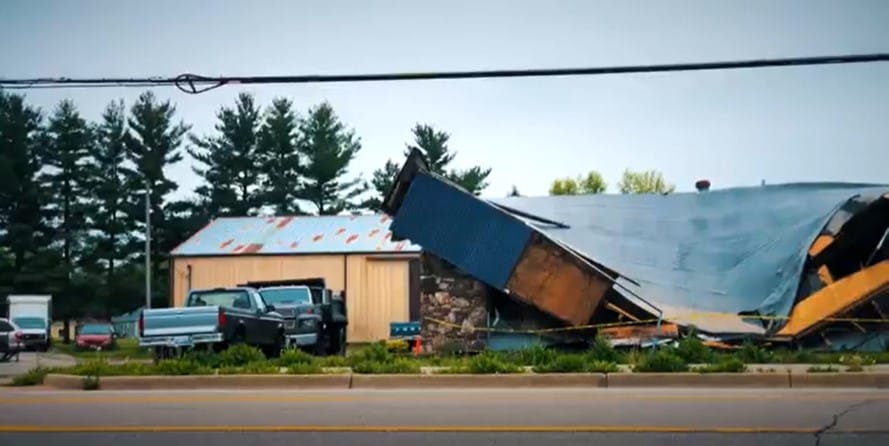
You’re not alone in your concerns about troubles in the future. We’re at a unique moment in mankind’s history, a moment that occurs once every few generations. A time of convergence of multiple threats which could leave you on your own. Your survival depends upon understanding how society breaks down after a disaster when help isn’t on the horizon.
In the wake of disaster, the initial 24 hours may seem deceptively calm. Whether it’s the aftermath of a storm, earthquake, or a national power outage, people emerge from their shelters with hope. We tend to trust in government and public services to restore order swiftly. This facade of tranquility is fleeting, lasting only about two days. Soon, the true extent of the chaos becomes evident. Stores struggle without functioning point-of-sale transaction systems, refrigeration, and resupply, banks cease processing transactions, and deliveries of all kinds grind to a halt. Shortages emerge, sparking panic buying, possibly even looting, and intensifying the crisis.
By the 72-hour mark, the realization dawns that help won’t arrive, and systems won’t magically recover—community stress mounts. If stores haven’t been looted yet, they soon will be as unprepared individuals scramble to secure essential resources. If you’ve prepared, you can avoid this dangerous desperation. Those who haven’t will be caught in the frenzy. Law enforcement struggles to keep up, and local curfews, even martial law, may be imposed. We call this phase that emerges typically around the 72-hour mark W.R.O.L., which stands for Without Rule of Law. It’s a situation or condition in which the typical social and legal systems have broken down, and there is a lack of established government or law enforcement to maintain order. You may have seen it in news footage where police stand helplessly by as stores are looted, where firefighters stand by and watch the building burn.
When the unprepared realize that no help is on the way, they will acquire by whatever means possible what they feel they need to survive on their own. That may mean taking from you. Even if it doesn’t, you don’t want to be part of or swept up with the hordes of the unprepared.
What to Do
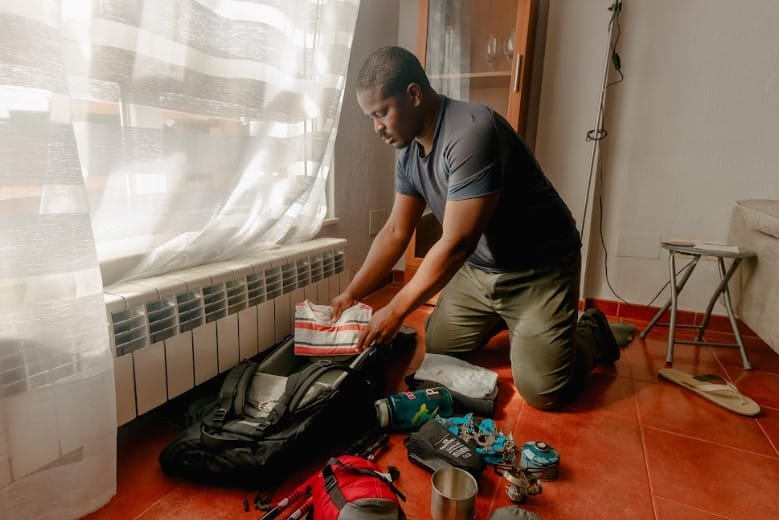
In the first 72 hours, you have a crucial window of opportunity. Act swiftly! Decide whether to shelter in place or bug out. Immediately store water in every available container since pumping stations might cease functioning. Understand that a town’s water tower may only hold between 100 and 500 thousand gallons of water for the entire population. If you rely on these tanks, remember they won’t replenish in a prolonged grid-down scenario. If possible, ensure your vehicle has ample fuel, but if you can’t get ahead of the crowds, don’t bother visiting a gas station as this may become a place where the panicked congregate and that’s too much of a risk to take.
If you must visit the store in the first 24 hours, do so with extreme caution. Panic may prevail and the risk may not be worth the reward. Your best plan is to have already prepared. Adjust your strategy based on your local store’s situation. Understand that while the grocery store may be overwhelmed, the hardware store might not be. While big franchise stores may be unable to process transactions, mom-and-pop stores might be keeping a paper ledger of transactions or still accepting cash.
Assuming you’ve prepared in advance, your primary decision within the first 24 hours is whether to stay put or leave. Within 48 hours, you should secure anything you safely can to remain locked down, or you should prep your home zone for an extended lockdown. Every hour that passes, roads fill up, and traveling becomes increasingly dangerous. Ask yourself, “Can I survive 100 days here?” Even if the answer is yes, have a bug-out plan and essentials ready if circumstances force you to evacuate.
Within 48 hours, check in with your Mutual Assistance Group if you’ve already formed one. If you haven’t, contact whomever you can and touch base. You can gather information this way and also forge alliances. Coordinate with neighbors or building occupants to enhance safety. While phone and internet systems may fail, explore alternative communication methods like CB or Ham radios. If all of that sounds too complex, consider giving a second walkie-talkie to a neighbor who can help monitor your neighborhood. Short of that, at least touch base with a neighbor to build mutual goodwill. It’s proven that neighbors don’t always help neighbors, but they certainly don’t if they don’t know anything about you. Monitor emergency radio channels for critical information, and if possible, track the situation via a police scanner. Avoid giving undue credibility to rumors and gossip; make decisions based on verified information.
Your strategy for the first three days must include preps and a bug-out plan. Implement your communication plan, monitor potential crises, and evaluate whether staying in your current location or relocating to a safer area is the best choice during this critical window of opportunity. Act swiftly, for time is of the essence.
The First Weeks – What You Will See
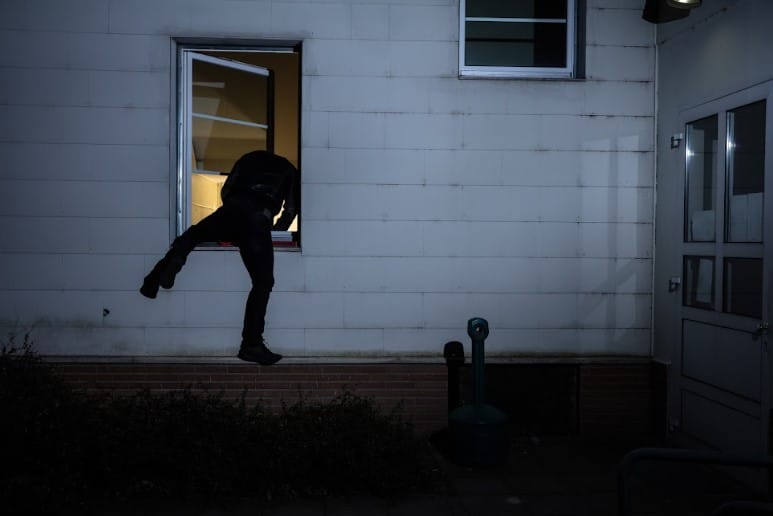
In the first weeks, if no help is coming, people begin to give up on the idea. They start to act out of desperation and frustration. Laws and rules don’t apply when people are hungry or desperate, and there is minimal chance of consequences, so you should have either bugged out or bugged in by going into total lockdown mode. In the initial week, supplies will quickly vanish, either bought up or taken by desperate individuals. Medications will start to deplete, pushing those reliant on them to seek help from overwhelmed hospitals. If power cannot be restored to medical facilities, the situation will worsen. Emergency services, including police, medical, and fire departments, will become inundated and unreliable. Governments are likely to declare martial law and curfews in an attempt to maintain order, a measure that citizens may resist, as seen worldwide in 2020. Vigilante security groups may emerge within neighborhoods and communities.
Relief efforts, shelters, and hospitals may be overrun entirely, depending upon the disaster you face. The ensuing bedlam and mayhem at these locations will be far more dangerous than any relief you might obtain from them, so it’s best to avoid them if you can. If the power hasn’t been restored after a week, there’s the genuine possibility it might not ever be restored. The sound of generators or electrical lights at night will attract desperate people.
Clean water may become scarce as water supplies dwindle or municipal supplies fail, and accumulating trash, deaths, and human waste become a problem. The failure of sewage plants could lead to contamination of municipal water supplies or local rivers. Natural gas and electricity will cease to flow, disrupting daily life. As the first week concludes, circulating cash will be in short supply, and bartered items like food, water, and durable goods will become more valuable. There are about a dozen places you want to avoid altogether, and I’ll link to a video about those in the comments below.
People will be faced with the decision to either leave densely populated areas or return to their city homes, significantly altered by the disaster. It’s essential to remember that the critical window for deciding whether to stay put or bug out is within the first 24 hours. Beyond that, competition and challenges will intensify at every step of your journey.
What To Do
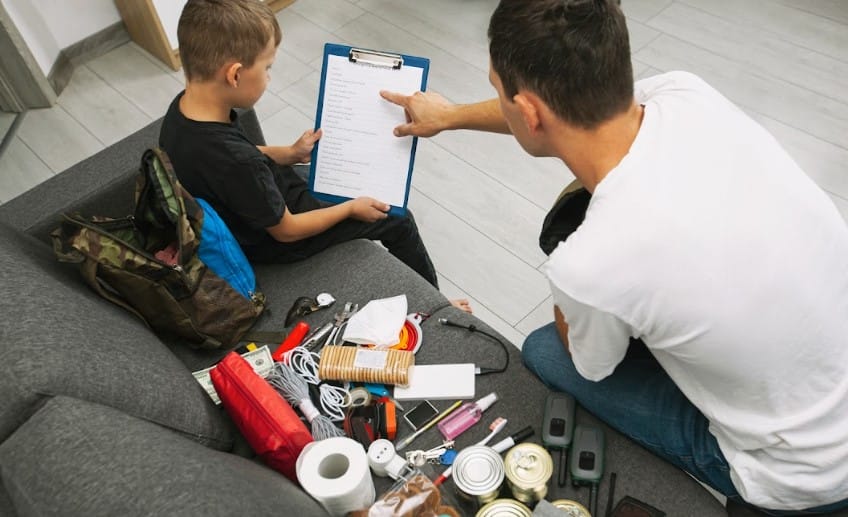
At this point, you have to conduct a meticulous inventory of your available supplies. You need to fully understand what you have and where your deficits will be in the future. It is imperative to gather all family members or group constituents into a central, defensible location where safety and resources can be maximized. After the first week, it should be evident whether a recovery will happen in the near future. If you conclude that recovery isn’t going to happen, you should begin rationing your supplies and assigning roles and responsibilities to family members or group constituents.
If you are locked down in an apartment complex or neighborhood, having a public meeting where you can define your community and its security will be the best course of action. You don’t need to nor should you divulge the extent of your supplies and preparedness, but you may wish to contribute to the community to secure commitments and services.
For instance, if you find out one of the neighbors is a medical professional, it may be in your best interest to provide them with some first aid equipment and, as a community, appoint them as your medical lead for the community. If one of your neighbors is a current or former law enforcement officer, perhaps they are suitable for the job of protecting your community from outsiders. Have the meeting and steer it to appointing people to specific roles, especially those of medical and security. You might also want to establish a community kitchen where large meals can be prepared to feed all neighbors. One large pot of stew can go a long way in networking and establishing a sense of shared community.
An additional vital consideration is the implementation of a waste management system. This encompasses the utilization of large buckets and trash bags to remove waste from your immediate living area effectively. To fortify security and enhance overall safety, particularly when in the company of others, establishing a 24-hour watch system at your residence is essential. Heightened vigilance, especially during nighttime hours, when conflicts are most likely to occur, can be pivotal in maintaining security.
Although some semblance of order may be upheld by martial law or local law enforcement during daytime hours, it is crucial to stay well-informed about developments transpiring within your neighborhood and community. If you must venture outside, it is prudent to confine your movements to well-trafficked areas, predominantly during daylight hours, where safety and visibility are significantly improved. These strategies, when diligently implemented, can substantially contribute to your capacity to overcome the challenges of the first week effectively.
In the first weeks of a disaster, if not actively fostering a sense of community or traveling during daytime hours when absolutely essential, your best place to be is indoors with the blinds drawn, lights out, and a heightened practice of operational security.
Day 30 to 100 – – What You Will See
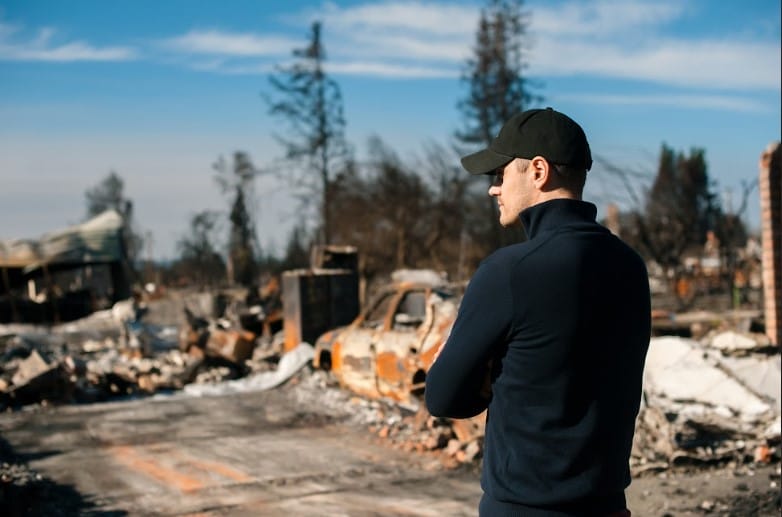
A month into the ordeal, it becomes painfully clear to even the most optimistic people that salvation is not on the horizon. In the aftermath of such an extended national calamity, it becomes more of a feudal power struggle, with communities pitted against one another in a desperate bid for the dwindling natural resources and remaining remnants of our once-structured society.
Anyone who deemed some other location safer has ventured out to try and get there. People’s food supplies are all but gone, so small groups of scavengers may have formed. Some of these groups may be almost constantly on the move looking for resources. Probably, you will no longer inhabit a densely populated region. Either you have chosen to depart, or others have vacated, leaving a landscape forever altered by the casualties of the first tumultuous 30 to 100 days.
This initial wave of devastation claims the elderly, those with significant medical conditions, individuals dependent on ongoing medical treatment, and anyone in a vulnerable state of health. Expect additional losses due to violence, starvation, dehydration, disease, arduous journeys, and exposure to the elements. The grim reality is that most people are ill-prepared even to walk a mere ten miles, forage for sustenance, locate potable water, or rely on the knowledge and skills necessary for survival beyond the fragile systems to which they’ve grown accustomed.
At this juncture, the world resembles scenes from a movie set in a post-apocalyptic environment, divided between communities banding together to rebuild through the exchange of labor, knowledge, and resources or remaining fragmented and fractured. Your role now encompasses contributing to sustaining your interconnected community, which may have forged trade alliances with neighboring enclaves. Despite the common notion that preppers can go it alone, the pragmatic truth reveals an interdependence on a community network for survival unless one resides entirely off the grid, deep within the wilderness – an option accessible to very few. For the majority of preppers, survival hinges upon cooperation and mutual support.
What To Do

From day one, you should have rationed your food and water. You are trying to get to the rebuilding of society phase. What that new world will look like for you will depend on what is left of the old world and what you manage to pull together as a community of survivors. It’s possible that you might not have emerged from your locked-down home at all over these first 100 days. If that’s the case, understand you will be emerging into a world where alliances of necessity have already been formed. You will be the outsider to these new communities even though you never left.
Cash will only have an initial value. After the first couple of weeks, water, food, and durable goods will be of more importance. Bartering and trade will hold more value in a prolonged or indefinite collapse. Supply chains will have stopped. The just-in-time delivery system with lean inventories will collapse relatively swiftly. Supply trucks will cease to deliver. Take advantage of any supply handouts for appearance and necessities, but don’t sacrifice your safety if they turn into chaotic mobs grabbing resources. Even if you don’t need the food or water, you can trade it for items you need, like winter coats, blankets, or other critical things.
Unless you plan to remain forever secluded, you will need to engage in community building or the building of your own mutual assistance group. Otherwise, you’re just a target sitting on a pile of resources others covet. If you begin this building process after the first week, you should have some basis for re-establishing society, repairing infrastructure, and establishing order.
Prepping for a national disaster lasting more than 100 days may seem extreme, but it should be your realistic goal. We are seeing too many disasters worldwide where no help is quick to come. There are many ways things can go sideways. All the while, each new disaster reveals that our current systems are way too fragile and probably cannot sustain themselves through what we may see in the future. If you can survive the first 100 days after a significant collapse, you will likely be able to survive the long haul and make it to the rebuilding phase. A return to the way things were before a collapse of that magnitude just isn’t a possibility after 100 days. The world will have changed, and you will have had to change with it. Survival is possible, but you’ll inevitably have to rely upon your community, preps, and your networks. Apart from the items you’ve stored up, your significant assets will be the knowledge and skills you can bring to your community.
As always, please stay safe out there.


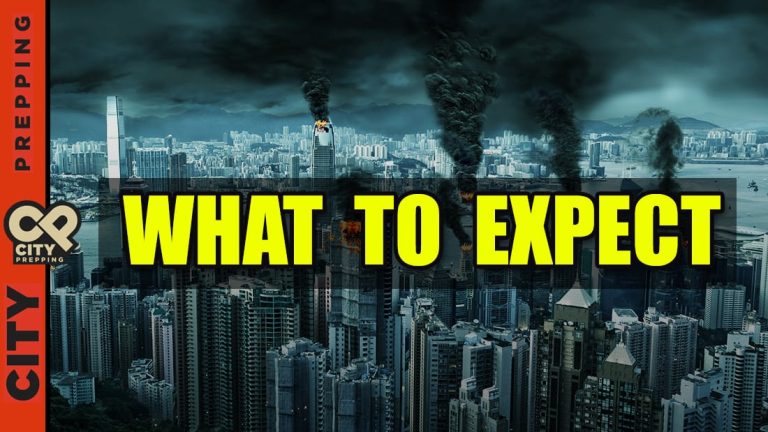




One Response